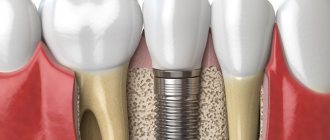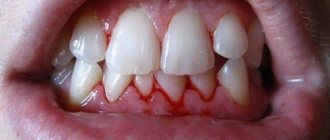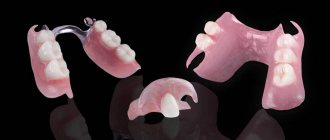In the photo: implants, made in Sweden
Until recently, there were a relatively small number of implantation systems on the Russian market. Basically, these were systems from leading foreign world brands, quite expensive, and the dental implantation service itself belonged to the premium class dentistry segment.
Along with foreign implantation systems, there were (and still are) implants from domestic manufacturers. Russian-made implants were often made of less pure titanium, and their design was far from perfect, as a result of which the success rate of implantation was quite low. It is these implants that have given rise to so many fears and myths about their rejection.
Research and development
Any invention, even the smallest and most insignificant, entails a huge amount of work and millions of investments. And dental implants are no exception. It took more than one year of research, hundreds of millions of euros were spent before scientists found a bioinert material compatible with human bone tissue.
The first person to install dental implants was Per-Ingvar Brånemark, a scientist from Sweden. In 1965, his patient was Göst Larsson, who had completely missing teeth in his lower jaw. Dr. Brånemark implanted 4 implants on which a denture was then installed, which subsequently radically changed the patient’s life.
Features of implantation
The advantages and disadvantages of implantation are closely related to the features of the technique, which distinguish it from other methods of tooth restoration. Some patients do not understand the principle of implantation, so they do not see much of a difference between classic and removable dentures (plastic, clasp) and implant-supported dentures. Before examining the pros and cons, you need to understand the main components of implant treatment.
- An implant
is not a prosthesis. An implant is a titanium (most often) pin that replaces the root of a tooth. The coronal part is replaced with a prosthesis, and the implant itself is installed in the bone tissue, so we do not see it. In this case, it is the artificial root that supports the prosthesis and allows it to perform its functions. Any other technique does not involve restoring the tooth root, but replaces only its visible part. - Implantation
is a surgical procedure. Any implantation technique (even the most gentle) is invasive and involves intervention in hard and soft tissues. Surgical procedures have a certain number of contraindications and also require a rehabilitation period. - Implant treatment
consists of surgical and orthopedic stages. Sometimes they can be combined, but most often it takes a certain amount of time to move to the second stage.
There are dozens of nuances that reveal various aspects of implantation, but the points described above are decisive for those patients who want to understand the key features of this concept. Read more about the benefits of dental implantation below.
Manufacturing technology
A dental implant is not just “a screw that is screwed into the gum.” The titanium alloy from which the implant is made is not cheap in itself, since it has a number of standards and requirements, after all, this material will be found in the human body.
Also, the technology for manufacturing implants itself is quite expensive. After all, for example, just one machine that cuts a titanium rod and makes a blank for a future implant costs about €250,000. And at the factory there can be about 50-100 such machines.
In addition, the dental implant must be degreased and disinfected, which also entails additional cost. Some manufacturers, for example, Straumann®, additionally treat implants with a special acid to make their surface rougher. This ensures more reliable adhesion of the implant to the bone.
Why patients pay more when they fall for the “bait” of a low price
When you contact dentistry for a promotion that promises to install an implant at a low price, you will most likely:
- They will offer cheap implants, passing them off as premium.
- They will quote an inflated price for the crown by 2-4 times, due to this the price of the implant will be reduced by 2-4 times.
- They will set conditions. that you immediately need to order a crown while there is a campaign for installing “cheap” implants.
- They will rush the decision, arguing that you could miss out on a very profitable offer,
- Offer instant loan processing if there is not enough money for a crown.
As a result, the patient pays 4-5 times more than planned and at the same time feels guilty towards himself and his loved ones for unforeseen expenses.
In fact, he is not to blame for absolutely anything. Objective information is deliberately hidden from the patient so that he does not understand that he needs to pay several times more than the price promised in the advertisement.
Competence of an implantologist
Among other things, you should also not forget that dental prosthetics and implantation are quite painstaking work, and it must be performed by a doctor of the appropriate level. But in order to achieve competence in this industry, you need at least 5 years of basic education and another 5-10 years of gaining expertise in implantology.
Also, the doctor or his assistant must understand the field of prosthetics, which means additional training costs. On average, a good basic education for a dentist costs about €75,000, gaining knowledge in implantology will cost another €50,000 + the same amount will cost the base on prosthetics.
As a result, €175,000 is spent on quality education alone. To everything else, you also need to add the effort spent on training and years of practice. Therefore, a self-respecting good implantologist will not devalue his work.
Implant production
As you can imagine, quality of workmanship matters. First of all, a significant factor is the equipment on which the implantation system is manufactured.
The more precisely and with great attention to detail your implant is made, the more likely it is that the implant will last a long time. Agree, you are installing an implant not for a year or two, but for a long time.
Recently, the dental market has begun to become saturated with cheaper implant systems of Asian origin, manufactured by manufacturing companies that often do not have a long history and sufficient clinical experience in using their implants. In short, the manufacturer does not guarantee success and does not provide specific recommendations for the use of its product.
Implant experience matters
Omitting the technical details and features of the production of modern implantation systems, it is necessary to pay attention to the experience of the company itself.
The fact is that it is impossible to immediately produce an implant of an ideal design, thought out to the smallest detail. A good implant system is constantly being refined and improved, and this takes time. Many honest manufacturers of implantation systems are in close contact with implantologists, improving the quality of their products, and this also requires time and expense.
In a word, to ensure a stable and guaranteed treatment result, long and painstaking work by the implant manufacturer in close cooperation with doctors and practicing surgeons is required.
Service and clinic
In addition to the points listed above, you should also remember the place where dental services will be provided. This must be a well-equipped clinic or a full-fledged dental office with appropriate equipment, which costs tens of thousands of euros. And in order to install an implant on a tooth, place a crown, or build up bone tissue, you need to have special equipment, which also needs to be sterilized according to the protocol. After all, if even one point is missed and complete sterilization is not achieved, the likelihood that the implant will not take root will increase significantly. This is another answer to the question “Why don’t implants take root.”
And also do not forget about the state and the taxation system. After all, doctors who work “transparently” also pay income tax, which is included in the cost of dental services.
Who is suitable for this or that implantation?
Often there are non-inflammatory or infectious causes that require tooth extraction. At the Dr. Martin clinic, patients can plan to restore a tooth with an implant before undergoing tooth extraction. Regardless of the method of implantation, preliminary diagnosis and preparation for prosthetics are necessary.
Dental implantation immediately after extraction can be performed if the indication for extraction was:
- severe destruction of the crown;
- cervical, acute-ringed, oblique or horizontal fracture of the tooth root;
- inability to perform tooth restoration.
Simultaneous implantation involves inserting a pin into a “fresh” hole. 1–2 hours pass between tooth extraction and implant installation. After the structure is installed, the hole can be sutured, or a temporary crown can be fixed to it.
It is recommended to prefer two-stage implantation when planning tooth extraction if:
- removal was performed due to dental disease;
- there is a deficiency of bone tissue;
- abnormalities of the jaw or dentition are diagnosed;
- there are infectious or inflammatory processes affecting the oral mucosa;
- removal was emergency without prior preparation;
- smoking addiction.
The two-stage implantation procedure takes place no earlier than 3 months, when the bone tissue is completely restored. You shouldn’t tighten it too much either, as the bone may begin to atrophy and neighboring teeth may shift.
The first stage will be preparation for implantation, which may include correction of bone tissue, treatment of teeth and oral mucosa, and other manipulations. The second stage is implant installation. The specialist opens the gum, drills into the bone and implants a pin. Features of implant installation depend on its model. The gum is sutured or a temporary crown is fixed. Over the course of 4–8 months, the implant takes root. Only after osseointegration is complete is a permanent crown attached to the structure.
Why might dental implantation be cheaper in another clinic?
Free cheese only comes in a mousetrap. Therefore, seeing a significant difference in the cost of implantation, you should think about what was saved. Perhaps someone is saving on sterility. This could also be savings on the quality of materials or a kind of “compensation” for lack of experience. Therefore, before making a decision about implantation, be sure to go for a consultation with 2-3 different doctors and then, based on your own feelings, choose the specialist who you like best.
You should not chase the price, because it can play a cruel joke on you, for which you will later have to pay.
You should also understand that at the first consultation it will be difficult to name the final cost of implantation. After all, the price of a dental implant is determined not only by the cost of the implant itself, but also by your needs, the condition of your teeth, the amount of bone tissue, as well as other manipulations and materials that will have to be used during the implantation process. You can find out the approximate cost of implants and other services in Smile Office dentistry in the “Prices” section.
Sign up for a free 15-minute video consultation (zoom), or ask your question on Facebook or in a letter.
Implant and implantation system
The design of the implant and its components are certainly important factors, but the logic, thoughtfulness and quality of the system for installing the implant are no less important.
An implantation system is not only the implant itself, but also the tools for its installation, therefore each system has specially developed installation protocols. It is the combination of all components of the implantation system that ensures the success of implantation.
Ultimately, the quality of the entire implant system, and not just the cost of the implant itself, will affect the final cost of your treatment.
Tax deduction - in what cases and how much money can be returned
The tax deduction provides taxpayer patients with the opportunity to receive compensation in the amount of 13% of the cost of treatment. This possibility is provided by two documents:
- Article No. 219 of the Russian Tax Code, according to which all taxpayers have the right to receive an annual 13 percent compensation of the amount that was spent on treatment in various domestic medical institutions.
- Decree of the Russian Government No. 201 of March 19, 2001, which specifies the process for obtaining a tax deduction and a list of specific medical services, the cost of which can be compensated.
A percentage of the funds spent is accrued for the following types of services:
- medical procedures that were provided to the taxpayer or his spouse, minor children, parents;
- paid insurance premiums in accordance with the health insurance agreement;
- medications that were prescribed by the treating specialist.
The determination of the tax deduction is based on the total amount of expenses and cannot be more than 120 thousand rubles throughout the year. If a taxpayer intends to receive compensation for paying for the treatment of immediate relatives, he can only count on 50 thousand rubles.
Refund of part of the money spent on prosthetics
In March 2001, the Government of the Russian Federation issued Decree No. 201, which approved a list of costly types of treatment. One of the points on this list states that dental implantation is an expensive type of treatment. When drawing up a document on payment for medical services, which will be submitted to the tax office, the dentist indicates a code that classifies the treatment as cheap, and “2” as expensive. For implantation, code “2” is used. However, the list does not mention prosthetics on implants.
Strengthening bone tissue
The longer a patient is missing teeth, the more pronounced the phenomenon of bone atrophy is. Therefore, most often, the first step on the path to an ideal smile will be to build up bone tissue to a volume that allows for implantation. Dento-alveolar interventions (directed bone regeneration and sinus lifting, plastic surgery with bone blocks, etc.), which are carried out by leading specialists at NKclinic, are highly effective with the almost complete absence of any complications. We have introduced into widespread practice the operation of augmentation implantation, in which strengthening of bone tissue and implantation are carried out simultaneously. This procedure allows you to reduce the distance separating the patient from the cherished goal by six months.
Functional and aesthetic rehabilitation
Specialists:
Nazaryan David Nazaretovich Kyalov Grigory Georgievich
Description:
The patient came for functional and aesthetic rehabilitation.
A model was made on an articulator, and the orthopedic structure was fixed.
Collection and provision of documents
List of documents that need to be collected:
- an application addressed to the head of the relevant tax authority to receive a tax deduction;
- a certificate of the appropriate sample indicating the code of the medical service from the institution where the treatment was performed;
- an application to transfer money to the applicant’s personal bank account;
- a copy of the medical institution’s license to provide certain services;
- a copy of the agreement between the taxpayer or his relative with a medical institution, which contains a detailed list and cost of all services provided;
- cash receipt, which is proof of payment for services;
- a copy of the tax registration document;
- certificate 2 personal income tax from the place of work;
- copy of the passport;
- declaration of the Z-NDFL format;
- if the patient is one of the applicant’s family members, it is necessary to provide a copy of the marriage or birth certificate of the child to confirm the presence of family ties.
The entire set of documents is submitted to the tax authority in accordance with the taxpayer’s place of registration.
Total implantation for complete tooth loss - what is it?
Total (complete) prosthetics involves the restoration of all teeth using fixed or (temporary) removable structures: implants and beam systems, etc. The goal of implantation and prosthetics is to return the dentition to its natural functionality and aesthetics.
Total implantation is not always done from scratch, in the absence of teeth. Sometimes patients come to us with a request to treat or replace one or two teeth. But examination under a microscope and detailed diagnostics show that the problem is much more global than it seems, and such measures will not bring benefit or even temporary relief: leveling the height of the bite or even removing teeth with subsequent implantation is required.
Aesthetic and functional prosthetics
Specialists:
Nazaryan David Nazaretovich Kyalov Grigory Georgievich
Description:
More than 10 years ago, a patient came to us for aesthetic and functional prosthetics.
16 implants were installed, after three months 28 crowns were fixed on the implants.
Specialists:
Nazaryan David Nazaretovich Kyalov Grigory Georgievich
Description:
More than 10 years ago, a patient came to us for aesthetic and functional prosthetics.
16 implants were installed, after three months 28 crowns were fixed on the implants.











